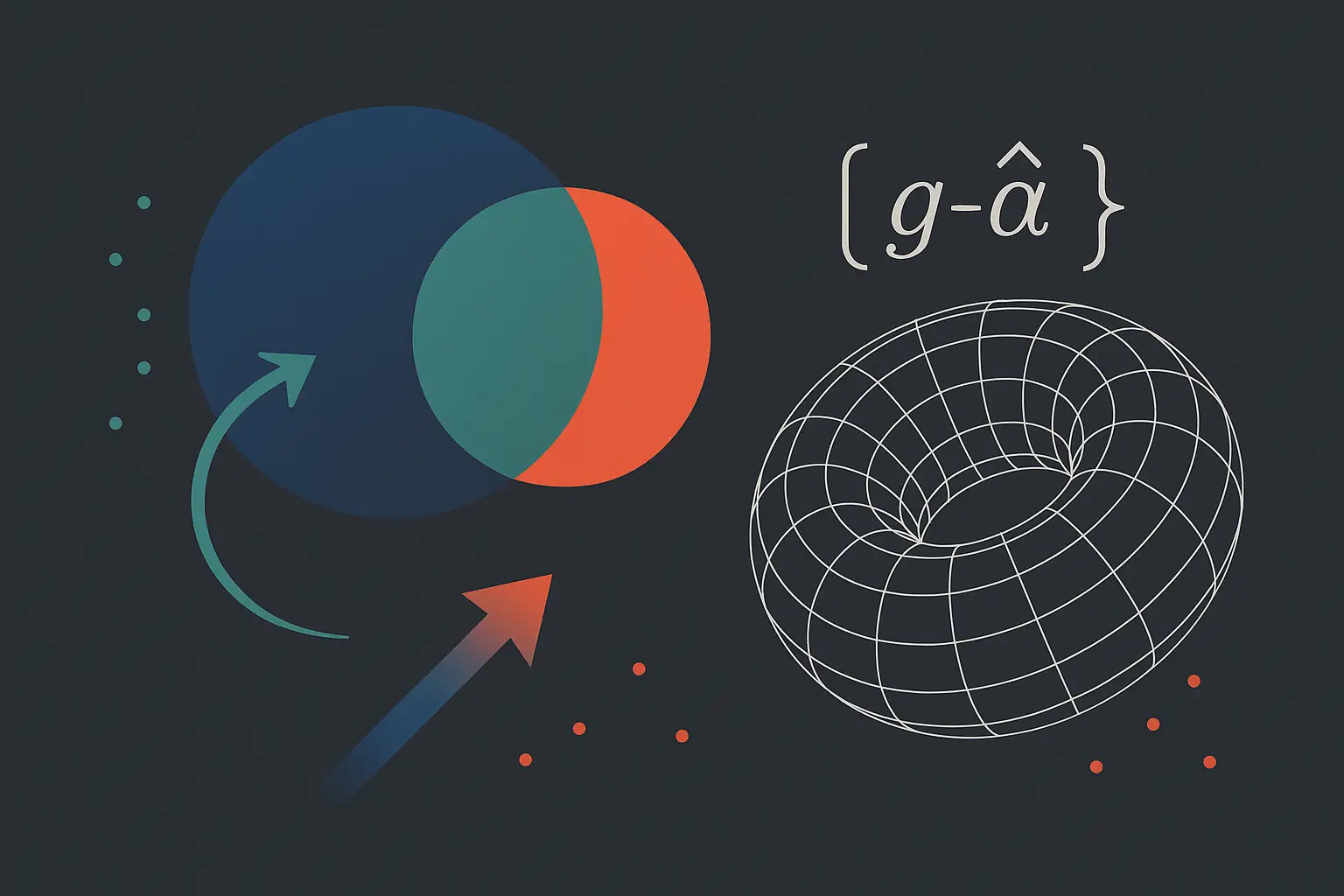Table of Contents
- Introduction
- What Are Lie Groups?
- Examples of Lie Groups
- Smooth Manifolds and Group Structure
- What Is a Lie Algebra?
- The Lie Bracket and Commutators
- Matrix Lie Groups and Their Algebras
- The Exponential Map
- Structure Constants and Generators
- Representations of Lie Algebras
- Cartan Subalgebra and Root Systems
- Classification of Simple Lie Algebras
- SU(2), SU(3), and SO(n) Algebras
- Lie Groups in Physics
- Gauge Symmetries and Yang-Mills Theory
- Conclusion
1. Introduction
Lie groups and Lie algebras form the mathematical foundation for understanding continuous symmetries. Their theory bridges abstract algebra, differential geometry, and theoretical physics. These structures are essential in classical mechanics, quantum field theory, and the Standard Model of particle physics.
2. What Are Lie Groups?
A Lie group is a group that is also a smooth differentiable manifold, where the group operations (multiplication and inversion) are smooth maps.
Formally, a Lie group \( G \) satisfies:
- \( G \) is a group
- \( G \) is a differentiable manifold
- \( g_1 \cdot g_2 \) and \( g^{-1} \) are smooth maps
3. Examples of Lie Groups
- \( \mathbb{R}^n \) under addition
- \( U(1) \): complex numbers of unit magnitude under multiplication
- \( SU(n) \): special unitary group
- \( SO(n) \): special orthogonal group (rotations in \( \mathbb{R}^n \))
- \( GL(n, \mathbb{R}) \): general linear group of invertible \( n \times n \) matrices
4. Smooth Manifolds and Group Structure
Lie groups locally look like Euclidean space. Tangent spaces at each point allow for calculus on groups.
Key property: Lie groups combine local linearity (manifold) with global symmetry (group).
5. What Is a Lie Algebra?
Associated with every Lie group is its Lie algebra, a vector space equipped with a binary operation called the Lie bracket:
\[
[\cdot, \cdot] : \mathfrak{g} \times \mathfrak{g} \to \mathfrak{g}
\]
The Lie algebra \( \mathfrak{g} \) is the tangent space at the identity of the group.
6. The Lie Bracket and Commutators
For matrix Lie groups, the Lie bracket is the commutator:
\[
[X, Y] = XY – YX
\]
Satisfies:
- Bilinearity
- Antisymmetry: \( [X, Y] = -[Y, X] \)
- Jacobi identity:
\[
[X, [Y, Z]] + [Y, [Z, X]] + [Z, [X, Y]] = 0
\]
7. Matrix Lie Groups and Their Algebras
If \( G \subset GL(n, \mathbb{R}) \), then the Lie algebra \( \mathfrak{g} \subset \mathfrak{gl}(n, \mathbb{R}) \) is the space of matrices tangent to \( G \) at the identity.
Example:
- \( SU(2) \) Lie algebra consists of traceless anti-Hermitian \( 2 \times 2 \) matrices
8. The Exponential Map
Connects the Lie algebra to the group:
\[
\exp: \mathfrak{g} \to G, \quad \exp(X) = \sum_{n=0}^{\infty} \frac{X^n}{n!}
\]
For matrix groups, this is the matrix exponential.
Locally, every element of the group can be written as the exponential of an element of the algebra.
9. Structure Constants and Generators
Let \( \{T_a\} \) be a basis for \( \mathfrak{g} \). Then:
\[
[T_a, T_b] = f^c_{ab} T_c
\]
Where \( f^c_{ab} \) are the structure constants of the algebra.
Generators \( T_a \) represent infinitesimal symmetries.
10. Representations of Lie Algebras
A representation is a map from a Lie algebra to matrices that preserves the bracket:
\[
\rho([X, Y]) = [\rho(X), \rho(Y)]
\]
Irreducible representations are key to understanding particle multiplets, angular momentum, and quantum states.
11. Cartan Subalgebra and Root Systems
- Cartan subalgebra: maximal commuting set of diagonalizable generators
- Root system: structure describing how other generators act relative to the Cartan elements
Used in classification of semisimple Lie algebras.
12. Classification of Simple Lie Algebras
Four infinite series:
- \( A_n = SU(n+1) \)
- \( B_n = SO(2n+1) \)
- \( C_n = Sp(2n) \)
- \( D_n = SO(2n) \)
And five exceptional algebras: \( G_2, F_4, E_6, E_7, E_8 \)
13. SU(2), SU(3), and SO(n) Algebras
- \( \mathfrak{su}(2) \): spin and angular momentum
- \( \mathfrak{su}(3) \): QCD color symmetry
- \( \mathfrak{so}(3) \): rotations in 3D space
- \( \mathfrak{so}(1,3) \): Lorentz algebra (special relativity)
14. Lie Groups in Physics
- Symmetry transformations (rotation, translation, boost)
- Gauge theory: local symmetry leads to gauge bosons
- Quantum field theory: internal symmetry groups define interactions
15. Gauge Symmetries and Yang-Mills Theory
Gauge fields correspond to Lie algebras:
- \( SU(3) \): QCD (strong)
- \( SU(2) \): weak
- \( U(1) \): electromagnetic
Yang–Mills theory generalizes Maxwell’s equations to non-Abelian gauge groups.
16. Conclusion
Lie groups and Lie algebras provide a deep and powerful language for describing symmetry in mathematics and physics. They underpin quantum field theory, gauge theory, and the Standard Model, and continue to guide modern theoretical research.
Understanding their structure is essential for mastering the modern landscape of high-energy physics and differential geometry.


